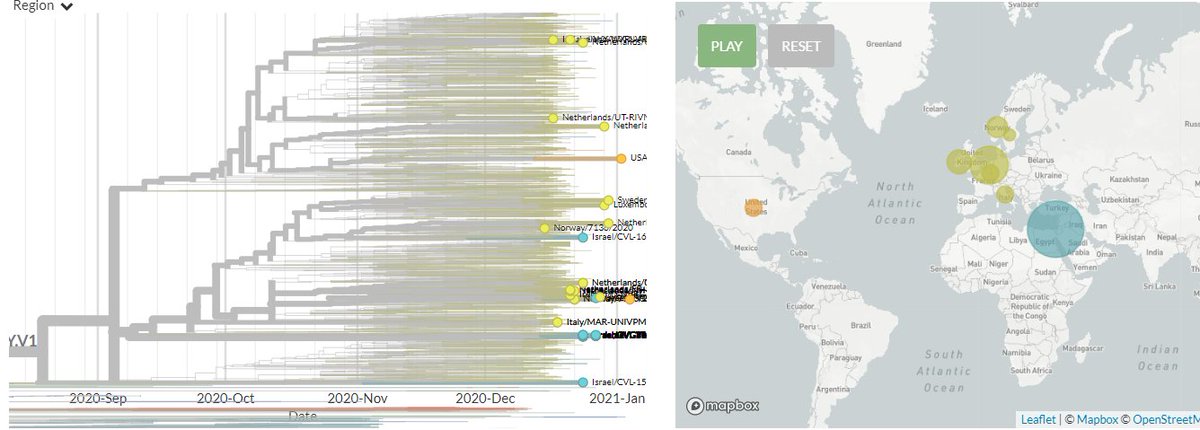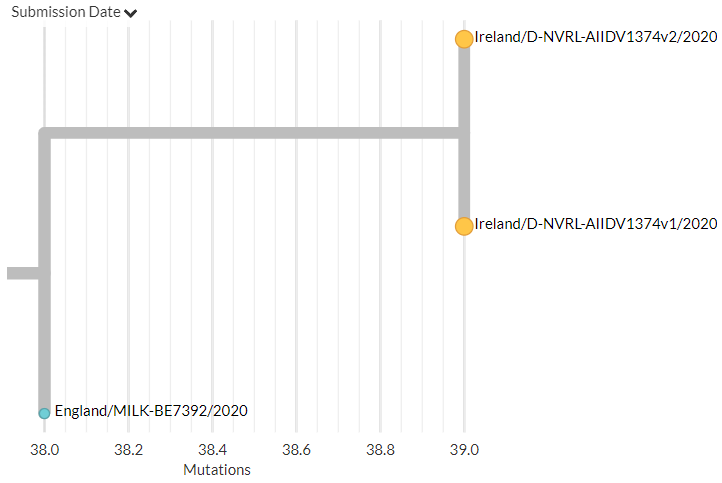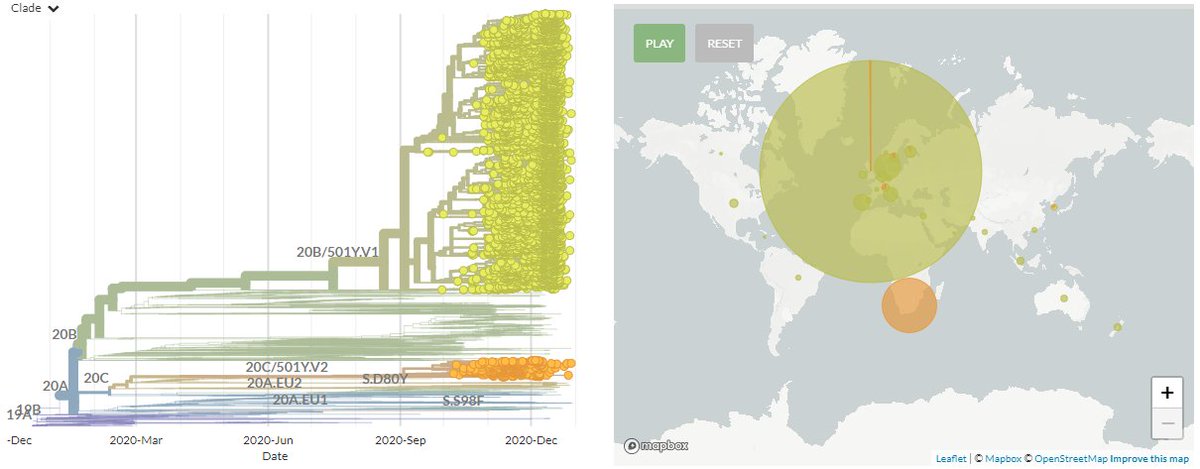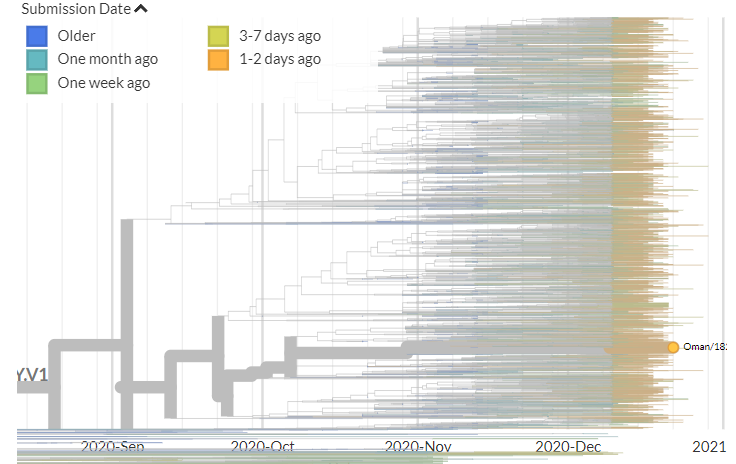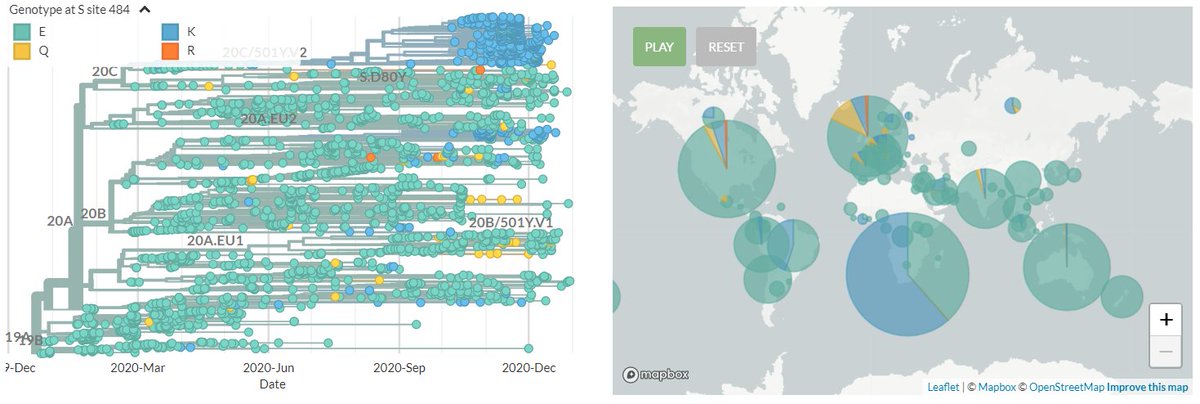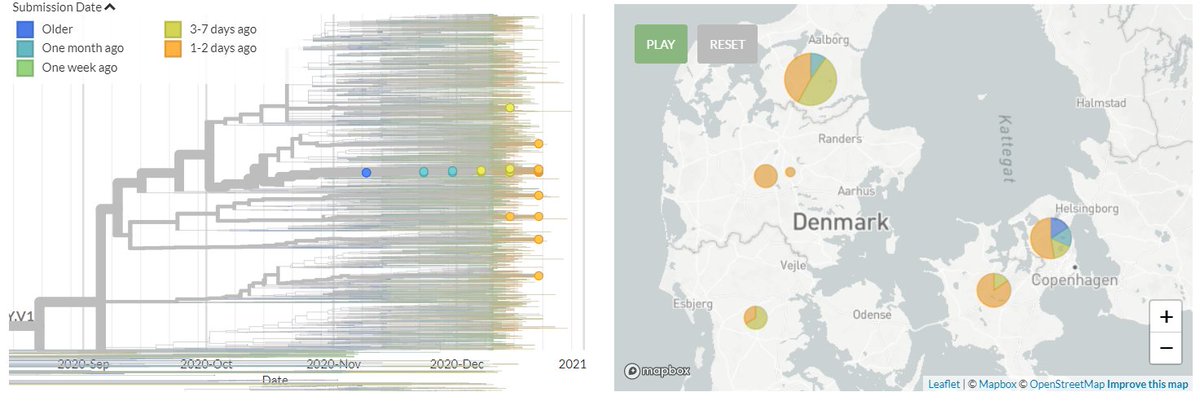
A brief update to the focal S:N501 builds to start your Friday off right! This one includes data from 7 Jan 21.
We have about 20 new sequences each in 501Y.V1 (B.1.1.7 #b117) & 501Y.V2.
Let's take a look at the new sequences, starting with 501Y.V1
1/14
nextstrain.org/groups/neherla…
We have about 20 new sequences each in 501Y.V1 (B.1.1.7 #b117) & 501Y.V2.
Let's take a look at the new sequences, starting with 501Y.V1
1/14
nextstrain.org/groups/neherla…

There are 22 new non-UK sequences in 501Y.V1, including for the first time from Luxembourg (3), & additional seqs from Singapore (1), Australia (4), France (12), & Switzerland (2).
2/14
2/14

First, Luxembourg has 3 sequences in 501Y.V1 for the first time. Each represents a separate introduction.
3/14
3/14

France has 12 new sequences (orange). Many of these represent independent introductions.
Zooming in (divergence view), we can see 2 new sequences are identical (possible local transmission), & 2 differ by 2 mutations (1 each).
4/14


Zooming in (divergence view), we can see 2 new sequences are identical (possible local transmission), & 2 differ by 2 mutations (1 each).
4/14



Australia has 4 new sequences (red and orange) which are spread across the tree, representing separate additional introductions.
5/14
5/14

Switzerland has 2 new sequences. One (marked 1st pic) is a clear separate introduction. The other (marked 2nd pic, zoomed, divergence) is from Bern & identical to an earlier sequence from Zurich ('ZH'). This could be local transmission or a common exposure.
6/14

6/14
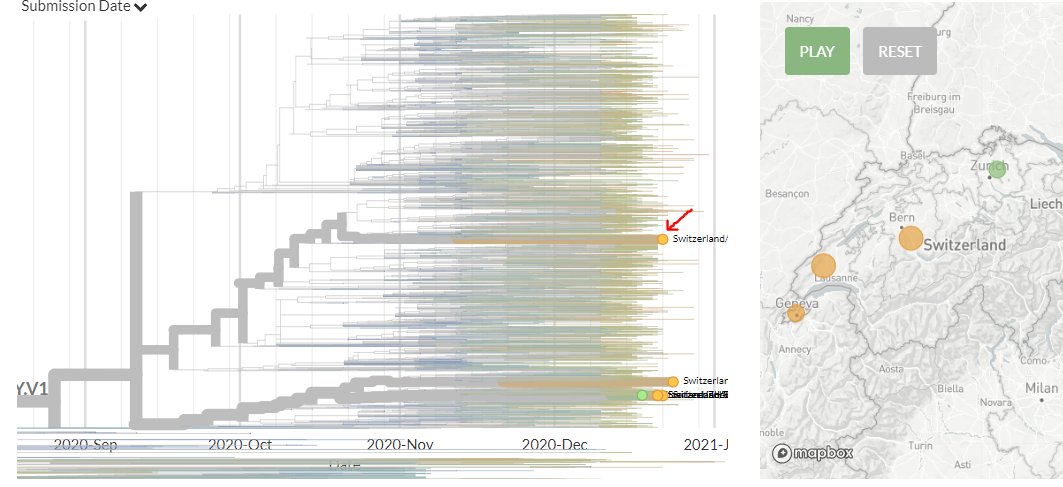

There is 1 new sequence from Singapore (orange).
Zooming in (divergence view), we can see it is identical to 2 older sequences, which may indicate local transmission or a common exposure.
7/14

Zooming in (divergence view), we can see it is identical to 2 older sequences, which may indicate local transmission or a common exposure.
7/14


There are ~19 new non-South African sequences in 501Y.V2, including for the first time from Botswana (6), South Korea (1), & France (1), as well as additional sequences from the UK (~9).
(UK data may be affected by subsampling due to large sequence numbers.)
8/14
(UK data may be affected by subsampling due to large sequence numbers.)
8/14

At least 9 new sequences from the UK are now in 501Y.V2 (UK data may be impacted by subsampling).
These are a mix of separate introductions & local transmission.
Connections to French sequences are in the next tweet...
9/14


These are a mix of separate introductions & local transmission.
Connections to French sequences are in the next tweet...
9/14



France has 2 sequences in 501Y.V2. They cluster together, which may indicate local transmission or a common source.
They are related to seqs from England, but whether this is European transmission or exposure to common diversity in S Africa can't be distinguished clearly.
10/14
They are related to seqs from England, but whether this is European transmission or exposure to common diversity in S Africa can't be distinguished clearly.
10/14

Botswana has 6 sequences in 501Y.V2. One sits apart from the others, indicating at least 2 introductions.
The other 5 cluster together, but are separated by a 1-3 mutations. This could indicate local transmission or transmission from unsampled South African diversity.
11/14

The other 5 cluster together, but are separated by a 1-3 mutations. This could indicate local transmission or transmission from unsampled South African diversity.
11/14


As previously, the country plots are also updated. Lithuania is now added!
Remember: many countries are currently focusing sequencing efforts on S:N501 variants, so frequencies are often not true representations of the 501Y variants.
13/14
github.com/hodcroftlab/co…
Remember: many countries are currently focusing sequencing efforts on S:N501 variants, so frequencies are often not true representations of the 501Y variants.
13/14
github.com/hodcroftlab/co…

Finally, we've added a new label to help identify a cluster of sequences with a S:N501*T* mutation currently circulating in Australia.
This is another independent appearance of a S:N501 (again, to T, not Y) mutation, & is not related to 20C/501Y.V2 or 20B/501Y.V1.
14/14
This is another independent appearance of a S:N501 (again, to T, not Y) mutation, & is not related to 20C/501Y.V2 or 20B/501Y.V1.
14/14

• • •
Missing some Tweet in this thread? You can try to
force a refresh



